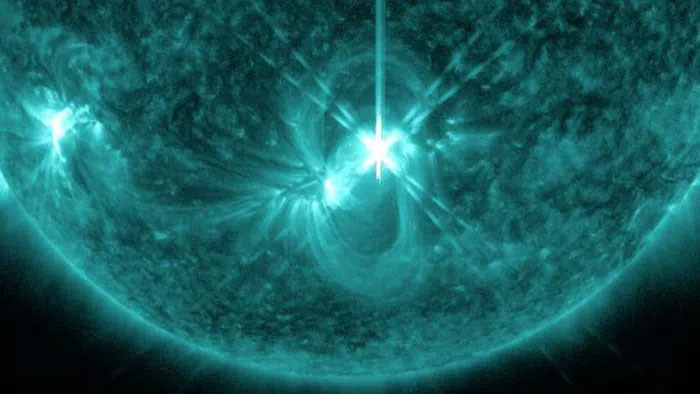After a powerful X-class solar flare, a coronal mass ejection (CME) could potentially ignite the Earth. The culprit continues to be our aggressive parent star.

The solar flare fired by the Sun on May 10 – (Photo: NASA).
According to Space, NASA’s Solar Dynamics Observatory has just recorded the strongest type of solar flare – an X-class flare – which erupted from the mixed sunspot AR3006 at 8:55 PM on May 10, Vietnam time.
This extremely powerful flare is directed straight towards Earth and will soon impact the atmosphere. The National Oceanic and Atmospheric Administration (NOAA) has issued a warning about the risk of shortwave radio blackouts in the Atlantic region.
Solar flares are bursts of intense energy emitted by the Sun, carrying many charged particles. These solar flares are responsible for geomagnetic storms (or solar storms) when they approach and affect Earth. Geomagnetic storms can lead to potential radio blackouts, disruptions in navigation systems, electricity, telecommunications, and even put aircraft, satellites, and migratory birds at risk of getting “lost.”
Worryingly, after such a powerful solar flare, there is often a coronal mass ejection (CME) that follows, which carries even more tremendous energy. Auroras will occur if the CME inadvertently intersects with Earth’s magnetic field lines, and we can only hope that it will be just a harmless light display.
According to NOAA, the CME is expected to occur around 11 PM on May 10, Vietnam time, and they are currently monitoring the possibility of auroras as this cosmic bomb reaches Earth.
The Sun is currently in a highly active phase of its 11-year cycle, continuously firing solar flares and CMEs towards Earth and other planets in the Solar System.


















































